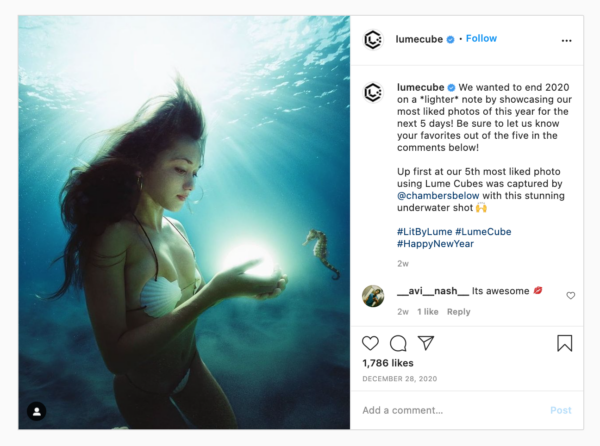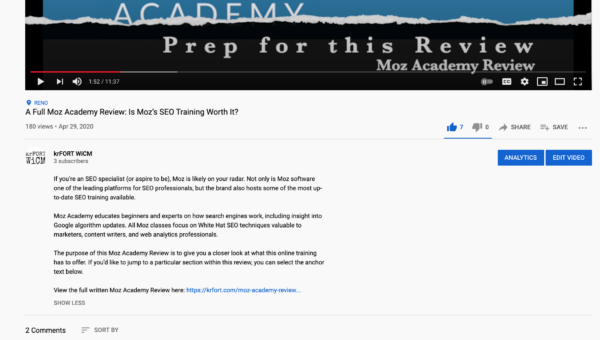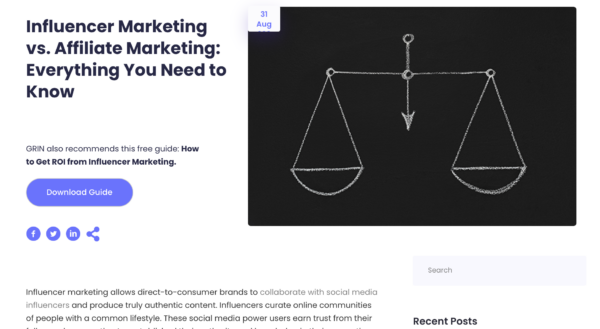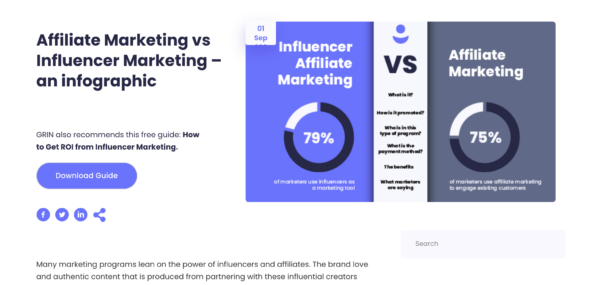Marketing has and always will be a trial-and-error process to some degree. The latest analytics can shrink some of the guesswork. But at the end of the day, you’re just not quite sure of your audience’s response until you launch your content.
But with repurposed content, you already have a good idea of what to expect.
Achieving success with your content means identifying what works and expanding on it. Not only will repurposed content save you money on content creation, but it will also increase content effectiveness across more channels. It’s a win-win strategy.
What is Repurposed Content?
Repurposed content (aka recycled content) is any content that you relaunch with moderate alterations. In most cases, repurposing content crosses content-type lines, such as social media posts to ads or podcasts to blogs.
It can be as simple as updating an old blog or as complex as adding a powerful influencer image (for which you have the rights) as a sponsored Google Image Shopping Ad with digital price tags.
First and foremost, you must own the content you repurpose or recycle. Second, you shouldn’t merely duplicate content. You will still want to tailor the content to the new destination, medium, or form.
Your goal is to identify the content that generates the most excitement among members of your audience and push it out in new directions. This strategy can help your content go farther and achieve higher engagement.
Top 5 Repurposed Content Ideas
1. Successful Influencer Posts to Shoppable Ads
Bigcommerce and MediaKix both report that almost 90% of surveyed marketers find that influencers generate as much or more ROI than all other marketing channels.

Influencers are social media power users that know how to get attention and leverage that attention towards promoting a particular lifestyle or set of values. Followers view their favorite influencers as both pseudo-celebrities and expert consumers. In other words, influencer recommendations matter to consumers.
Influencer content is non-branded, meaning that it is user-generated and presents a third-party, lifelike expression of the product it promotes. This level of authenticity appeals to consumers, and as a result, it receives more engagement.
Brands have learned that they can extend the life of their top-performing influencer content by recycling it into paid ads. Shoppable ads on Instagram and Facebook (for example) allow users to see a product they like within an image, add it to a cart, and checkout within the social platform. Not only are the images more appealing, but the ad design requires fewer clicks from viewing to purchasing. As far as repurposed content ideas go, this particular technique is a match made in heaven.
2. Long-form eGuide to Blog Series
Even though converting downloadable resources into a blog series seems like an obvious tactic, it alludes many content creators. Long-form eguides are fantastic for lead generation, but you can leverage that content for the website’s SEO value.
Disclaimer: You can’t duplicate content from a long-form blog/article into an additional blog series. Duplicating content results in search engine penalizations.
Within each blog in your series, you can encourage readers to download the entire guide. This approach delivers more value to your audience and can improve your Google rankings and lead generation.
3. Webinar/Podcast to Blog Post
An increasing number of B2B marketers are creating video case study content, publishing it online, and then using transcripts to create relevant blog posts. Similarly, podcasts also make great written content.
Brands can use this technique to leverage the power of written, video, and audio content for audience segments that prefer to consume content in a particular way. Each offers the opportunity for increased SEO value, and then marketers can promote that content on various owned media channels.
4. Blog to Long-form Video

Content creators can also reverse the approach above by converting a blog into a long-form presentation video. Though this tactic can be tedious (you will need an audio recording of your blog, as well as a video editor), you can get a lot of mileage from a search-engine-optimized YouTube video. Within the description, you can link back to your written blog for readers.
When you create a video presentation of your blog, you should also embed the video near the top of your written content. Visitors can choose to watch the video, read the blog, or both.
5. Blog to Infographic
Infographics are among the most popular types of image content online. Content marketers are learning that you can virtually make an infographic out of anything.

In the sample above from GRIN’s blog (an influencer marketing software company), the content team built an article with plans to create a supplementary branded infographic (below).

Infographics allow industry peers to use the graphic on their own blog and link back to your site. You can also promote your infographics on the leading social media channels such as Pinterest, LinkedIn, Facebook, and Instagram.
In Closing
Repurposing content increases the value of your content and decreases your content creation costs. As new platforms and features come available on social media, marketers should look for additional ways to recycle content in multiple directions.